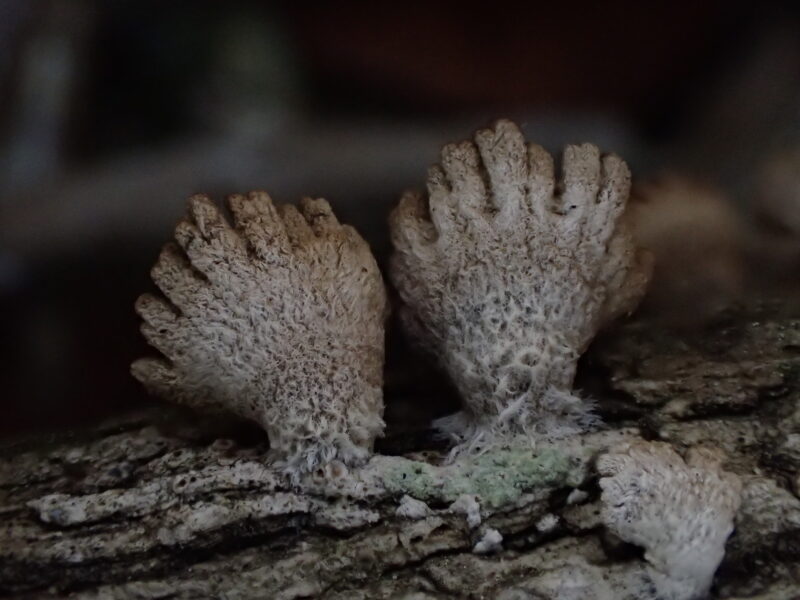With estimates of nearly 4 million species of fungi on the planet, many hardly get noticed as they live hidden from view. Approximately 144 000 species are known and scientists believe that 90 percent are undocumented. Fungi lack chlorophyll and don’t photosynthesize like plants and cannot produce their own nutrients. Simply put, they feed by secreting enzymes into the surface on which they grow; the enzymes digest the food substance which is then absorbed. This includes dead and living organic material such as rotting fruit, animal dung, wood and leaves. They are literally everywhere and some are easily missed as not all are large and brightly coloured.
During summer, and especially with good rain, the most amazing ones pop up in moist and mostly shady areas on Mountainlands. The mushrooms one sees are the fruiting bodies of some fungi. They release their microscopic spores (similar to pollen or seeds in plants) for reproduction before wilting again. Below are photos of some mushrooms and fungi that occur on the reserve. Where possible, scientific names and common names have been supplied.
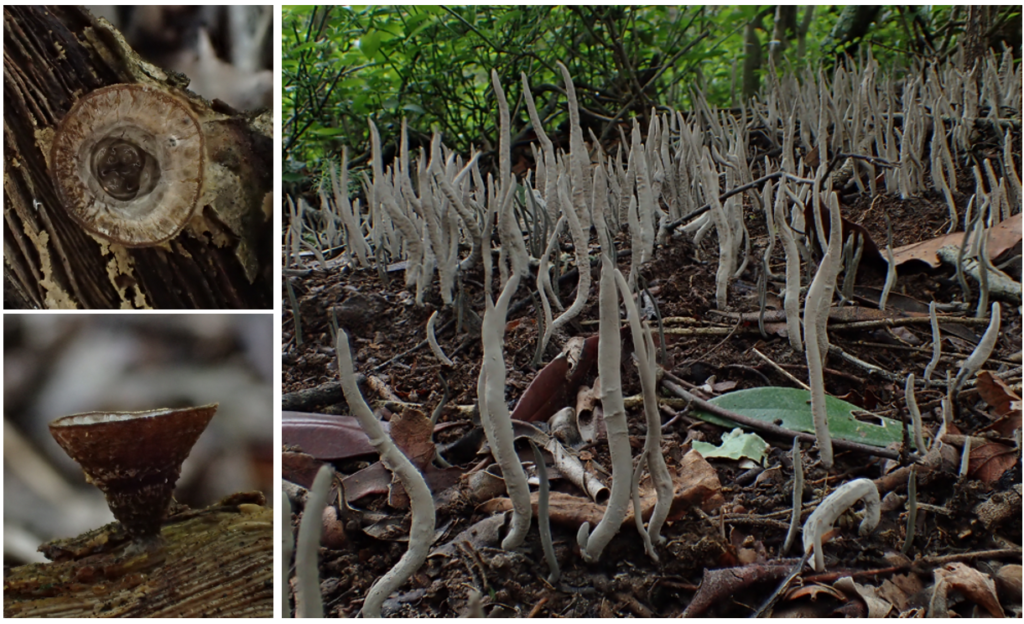
Left: This Cyathus species (Bird’s nest fungus) is easily overlooked due to its small size. Right: Xylary hypoxylon (Stag’s horn fungus)
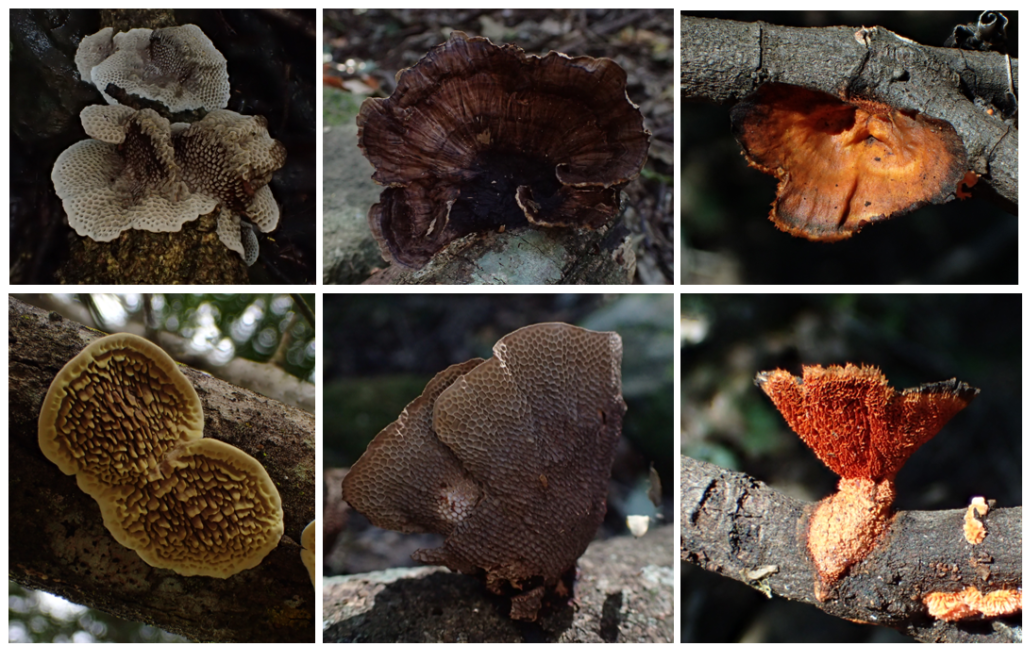
Bracket fungi. Middle top and bottom: Hexagonia tenuis (Thin-cap honeycomb bracket). Right: Pycnoporus sanguineus (Tropical cinnabar bracket)
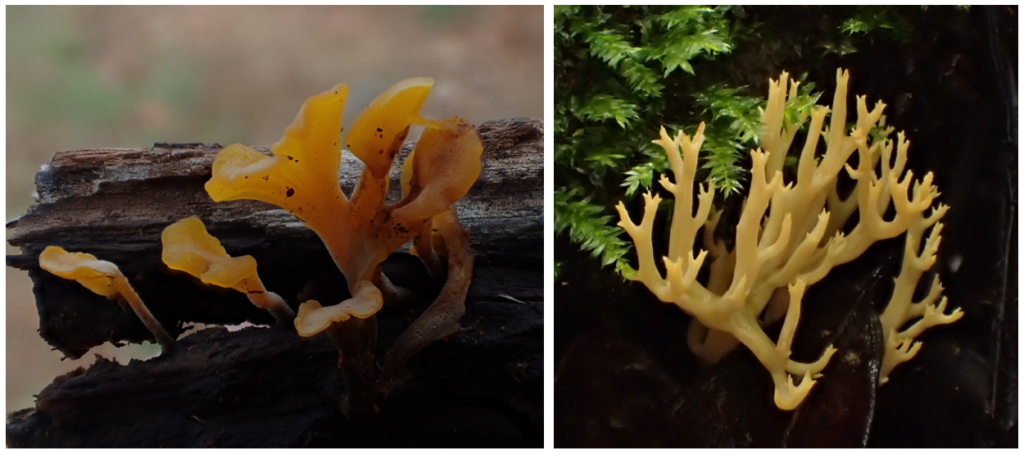
Left: Dacryopinax spathularia (Fan-shaped jelly fungus). Right: Ramaria formosa (Salmon coral fungus)
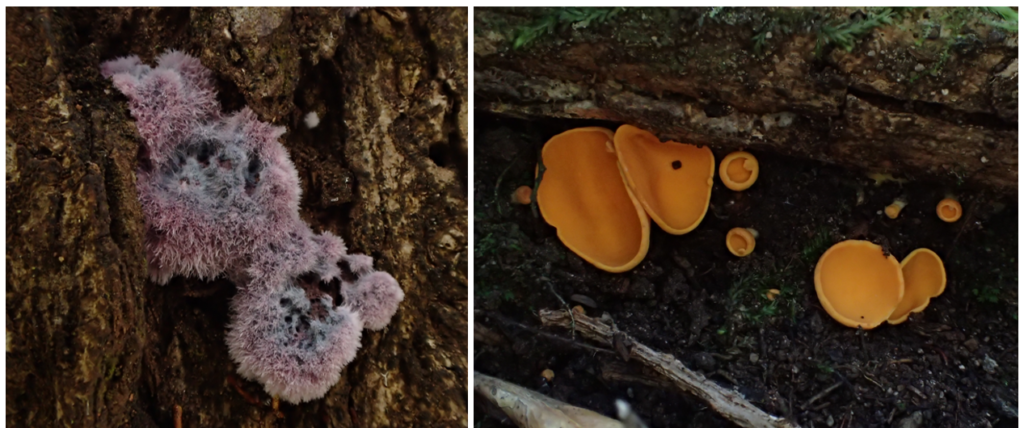
Left: Chondostrereum purpureum (Crust fungus). Right: A Cup fungus
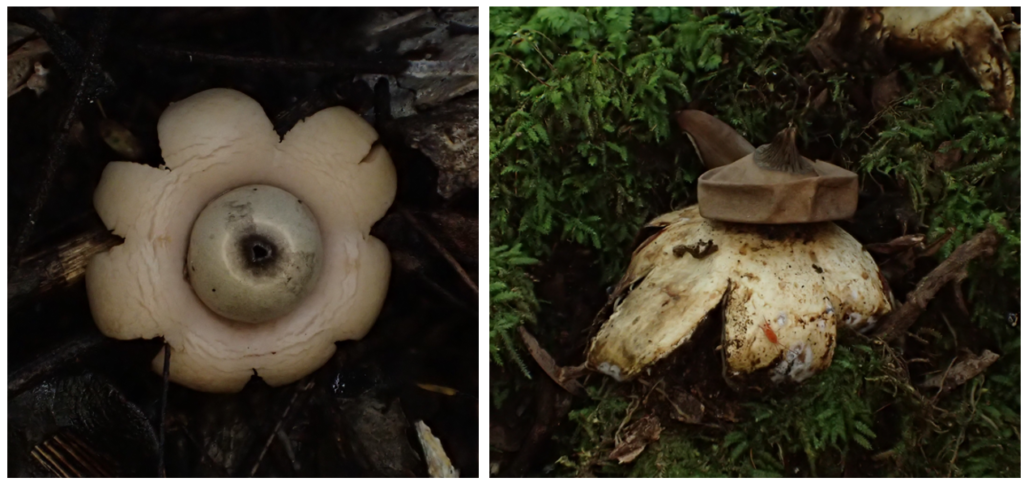
Geastrum species (Earth stars)
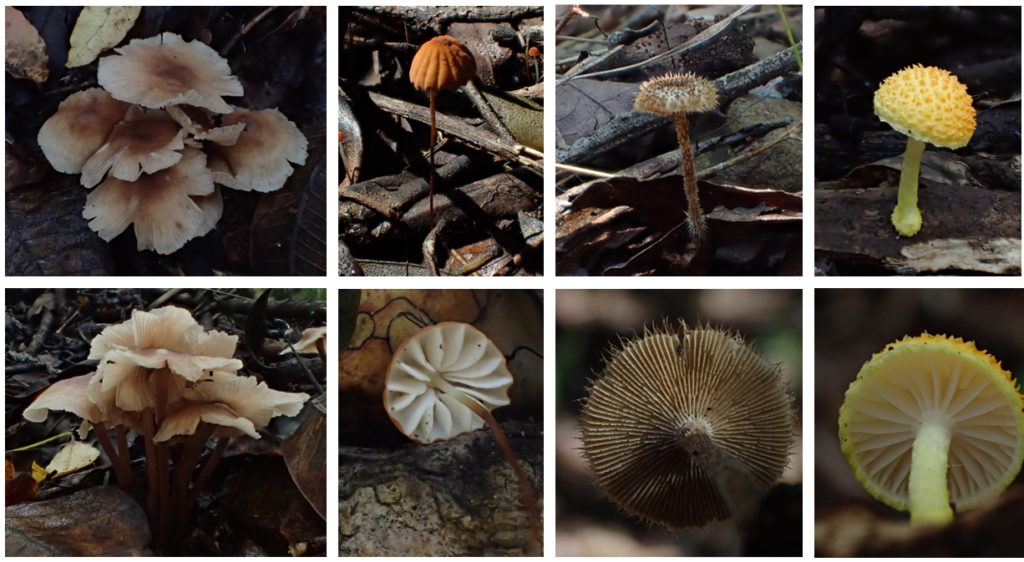
Mushrooms with gills on the underside of the cape. Second from left: Marasmius species (horsehair fungus). Third from left: Lentinus stuppeus (Hairy woodcap).Right: Cyptotrama asprata (Golden coincap)
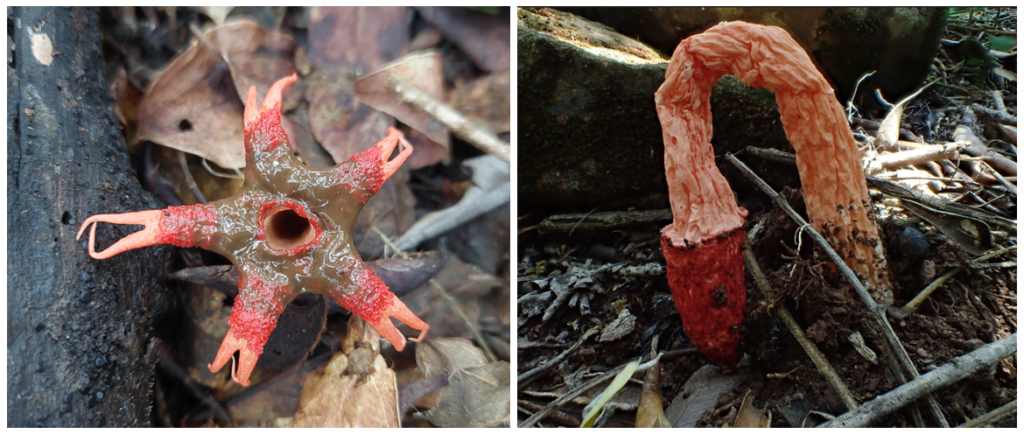
Left: Aseroë rubra (Star stinkhorn) is short lived and has a rotting scent that attracts flies responsible for the distribution of the spores. The mucus is the spore mass. Right:A Phallus species (Stinkhorn)
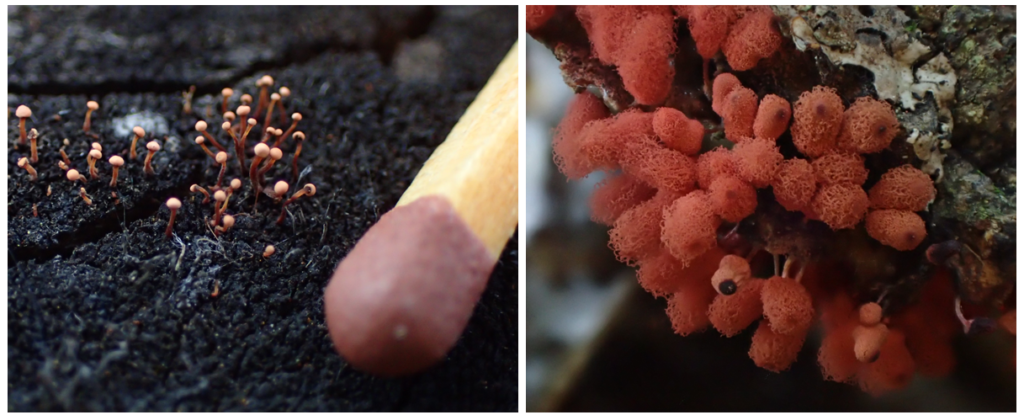
Miniature mushrooms. The size of the ones on the left compared to a match stick and the ones on the right are slightly bigger.

